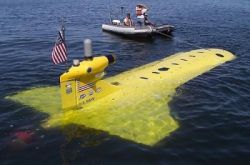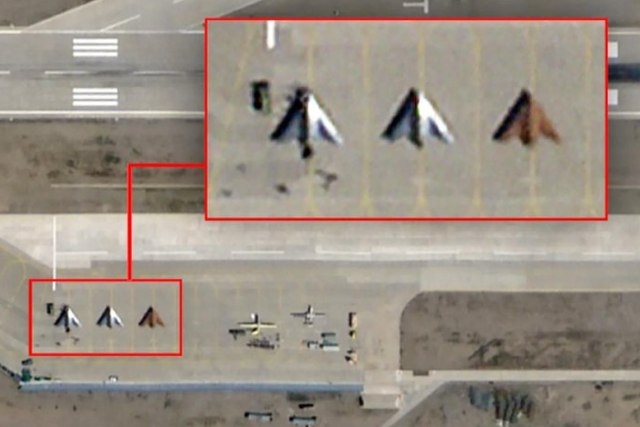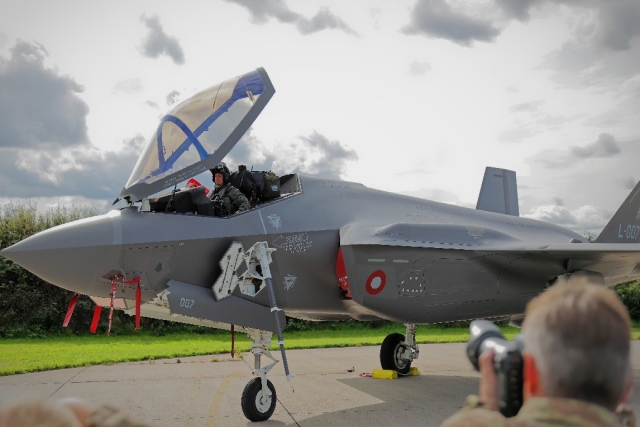Fishy Underwater Drones To Keep Potential Threats In Check

Unmanned aerial systems are proving to be the most dynamic sector in the aerospace industry by growing leaps and bounds.
Taking an unexpected turn, the drone war will now take not only to the skies but to the deep oceans as well. The latest in naval drone technology will now allow the U.S to keep a better track of the 600-odd submarines from 43 countries in check by fielding the new 'drone ship' called the Anti-Submarine Warfare Continuous Trail Unmanned Vehicle (ACTUV), and once completed, it will be a totally autonomous, submarine spying platform.
Led by DARPA with Science Applications International Corporation (SAIC) and Raytheon Corp, the ACTUV doesn't require an operator.
At a total program cost of $61 million, the ACTUV will be outfitted with an active and passive sonar system that has search, detection, and passive threat filtering capabilities. The advanced system allows the craft to send active "pings" for potential threats — which would reveal its position, or stay passive and listen while maintaining stealth, according to Raytheon.
In 2010, the U.S. Navy issued a RFI for next-generation follow-on to the Unmanned Combat Air System Demonstrator (UCAS-D), the Unmanned Carrier Launched Surveillance and Strike (UCLASS). According to Rear Adm. Ted Kraft, U.S. Navy director of ISR, UCLASS will need to have radar and an automatic identification system to cue an EO/IR sensor over vast expanses of an empty ocean.
According to latest studies, worldwide spending on UAVs is set to grow from the current $5.9 billion annually to $11.3 billion over the next 10 years.
Despite advances in the underwater drone sector; cost limits, fewer weapons platform and resources will keep underwater UAVs from bridging the gap between aerial drones for another 10 years, according to studies.
However, aerial drones will play a significant role in establishing a strong base for underwater drones. Earlier this year, the U.S Navy said that it wants to pack aerial drones and other intelligence-gathering technology into special containers built to withstand deep ocean pressures and distribute them around the world’s seas. The containers will rise to the surface when called into service from a remote location.
These “upward falling payloads” are seen as readying the Navy to address conflicts in corners of the world where it is too expensive or complex to establish a forward operating area, the Defense Advanced Research Projects Agency (DARPA) explained in a call for proposals.
“The goal is to support the Navy with distributed technologies anywhere, anytime over large maritime areas. If we can do this rapidly, we can get close to the areas we need to affect, or become widely distributed without delay,” said Andy Coon, DARPA program manager. “To make this work, we need to address technical challenges like extended survival of nodes under extreme ocean pressure, communications to wake-up the nodes after years of sleep, and efficient launch of payloads to the surface.”
To develop the program, DARPA has identified three key areas of focus: Communications, deep ocean ‘risers’ to contain the payloads, and the actual payloads. Since the program will emphasize the use of ambient pressure containment with its risers, there is no need for specialization of payloads to accommodate the extreme pressures of the deep sea. Communities with technical background in unmanned platforms; distributed sensors; networking; sensor packaging; information operations; electronic warfare; anti-submarine warfare, etc. may all be able to play a role, according to a DARPA statement.
Depending on the specific payload, systems would provide a range of non-lethal but useful capabilities such as situational awareness, disruption, deception, networking, rescue, or any other mission that benefits from being pre-distributed and hidden. An example class of systems might be small unmanned aerial vehicles (UAVs) that launch to the surface in capsules, take off and provide aerial situational awareness, networking or decoy functions. Waterborne applications are sought as well, the statement added.









